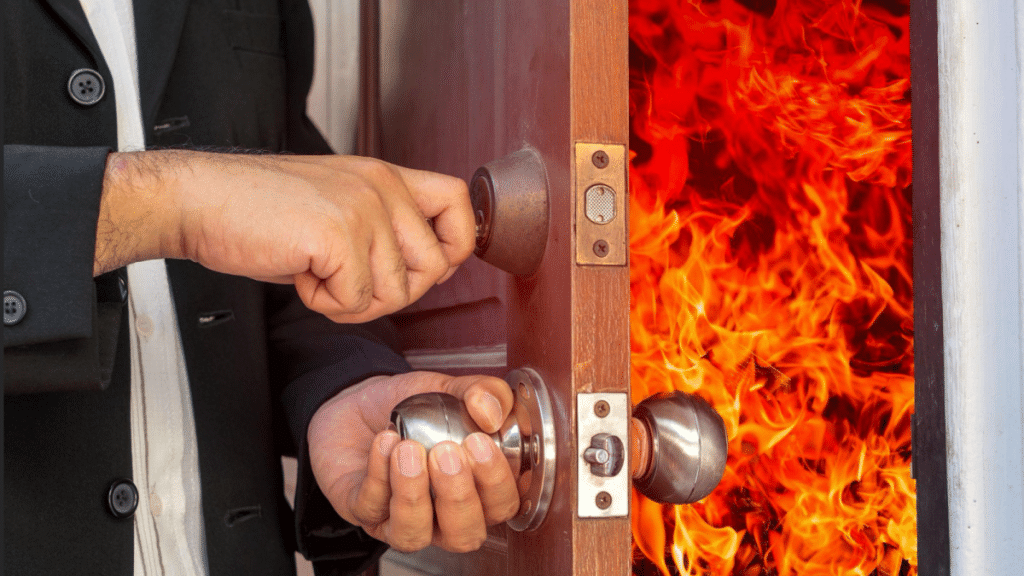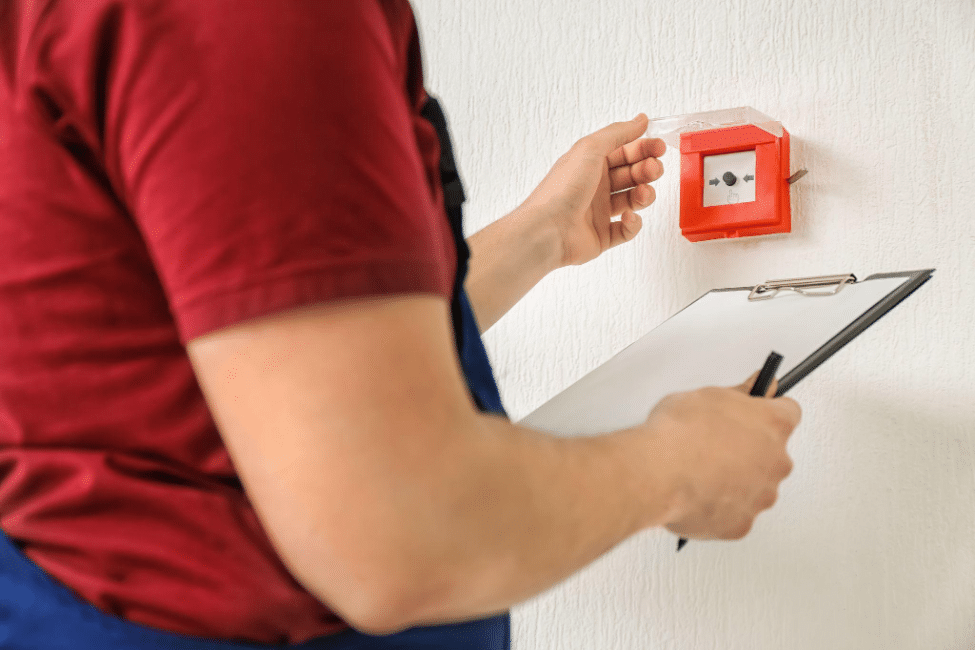Fire safety is a critical aspect of home management that cannot be understated. The possibility of a fire can cause devastation to property and pose a severe risk to the lives of individuals within the home. Ensuring one’s living environment is safeguarded against fire hazards is not merely a recommendation; it’s a necessity.
Fire safety at home encompasses various measures designed to prevent the inception of fires and effectively manage their consequences should they occur. This protective approach is a vital line of defence, minimising risks related to this potentially perilous emergency.
A crucial component in maintaining fire safety at home is the implementation of fire safety audits. These audits systematically assess potential fire hazards, identify deficiencies, and recommend measures to mitigate risks. Regular fire safety audits ensure continued vigilance and adaptability to evolving safety standards and practices.
In this comprehensive exploration, the necessity of regular fire safety audits at home will be thoroughly examined. The detailed analysis will cover everything from understanding the fundamentals of fire safety audits to their role in preventing fire hazards, ensuring legal compliance, and offering practical tips for conducting audits efficiently.
Understanding Fire Safety Audits: An Overview
A fire safety audit is an intentional, systematic assessment of a property designed to identify and evaluate fire hazards and the efficacy of existing preventive measures. This audit encompasses a thorough examination of various fire safety elements, including fire detection systems, suppression systems, fire barriers, evacuation routes, and fire safety training among residents.
The process of a fire safety audit typically involves the following steps:
- Initial Survey: Gather basic information about the property, its layout, and the use of different areas.
- Inspection: Conduct a direct inspection, focusing on fire detection and protection equipment, storage of flammable materials, electrical installations, and structural fire integrity.
- Evaluation: Assess the effectiveness of current fire safety measures, the viability of evacuation plans, and the preparedness of occupants in the event of a fire.
- Reporting: Document findings, highlighting potential hazards, compliance issues, and areas for improvement.
- Recommendations: Propose actionable measures to mitigate identified risks and enhance fire safety.
There are primarily two types of fire safety audits: professional fire safety audits and self-assessment fire safety audits. Professional audits are conducted by certified fire safety experts who bring a wealth of knowledge, experience, and objectivity to the process. Self-assessment audits, however, are conducted by homeowners themselves, following guidance from fire safety resources. While both are valuable, professional audits often provide a more comprehensive and accurate assessment.
Fire safety audits are indispensable for several reasons. They not only highlight immediate and potential fire hazards but also prompt the regular upkeep of safety equipment and adherence to evolving safety standards. Through these audits, homeowners can create a safer living environment, reduce the likelihood of fire incidents, and ensure timely intervention in case a fire starts.
The Role of Fire Safety Audits in Preventing Fire Hazards
Fire safety audits play a pivotal role in identifying and managing fire hazards that might otherwise go unnoticed until it is too late. Through systematic assessments, these audits are adept at pinpointing vulnerabilities within a home, thereby forestalling potential fire outbreaks.
During a fire safety audit, several common types of hazards are often identified:
- Electrical Hazards: Faulty wiring, overloaded circuits, and inadequate electrical installation can lead to fires. Audits can highlight these issues and recommend suitable rectifications.
- Fire Detection and Suppression Failures: Out-of-date or non-functional smoke detectors and fire extinguishers diminish the home’s defensive capabilities against fires. Ensuring these systems are operational is paramount.
- Combustible Materials: Improper storage of flammable materials, unmanaged clutter, and unattended heat sources significantly increase fire risks. Audits encourage safer practices in material storage and management.
- Structural Vulnerabilities: Inadequate compartmentalisation, poor fire barriers, and obstructed evacuation routes can amplify the severity of a fire. Audits focus on these critical structural aspects to ensure they meet fire safety standards.
Conducting regular fire safety audits can safeguard both assets and lives by ensuring all fire safety measures are up-to-date and functional. When hazards are identified early, preventive steps can be taken promptly to mitigate risks, thereby preserving the property’s integrity and the well-being of its occupants.
Furthermore, audits prepare households for swift action in the event of a fire. By ensuring that residents are familiar with evacuation plans, the correct operation of fire safety equipment, and emergency protocols, audits foster an environment where everyone knows the roles they need to play during a fire. This readiness significantly contains the damage and ensures the safety of all household members.
Benefits of Regular Fire Safety Audits
Implementing regular fire safety audits at home brings a myriad of benefits that stretch beyond the immediate detection and rectification of fire hazards. These benefits permeate various aspects of home management, offering tangible advantages in both practical and peace-of-mind terms.
One of the standout benefits of regular fire safety audits is the potential reduction in insurance premiums. Many insurance providers acknowledge the proactive approach of homeowners in maintaining fire safety and may offer discounted rates. These audits demonstrate the home’s lowered risk profile, making it a less risky proposition for insurers. Additionally, in the unfortunate event of a fire, having documented evidence of regular fire safety audits can streamline the claims process, providing proof that the homeowner took all possible precautions.
Moreover, conducting regular fire safety audits instils a sense of security and peace of mind. Knowing that the home has been meticulously assessed for fire hazards and that preventive measures are in place allows homeowners to live without the perpetual fear of fire-related incidents. This mental assurance is invaluable, contributing to an overall sense of well-being and comfort.
Another significant benefit is enhanced preparedness in the event of a fire. Regular audits ensure that fire safety equipment, such as smoke detectors and fire extinguishers, is always in optimal condition. It also means that evacuation routes are clear, and all household members are familiar with emergency protocols. This preparedness can make the difference between minor damage and catastrophic loss, potentially saving lives and reducing property damage in the event of a fire.
Lastly, there’s no overstating the life-saving benefits linked to regular fire safety audits. By identifying and mitigating hazards before they evolve into emergencies, audits can prevent fires from starting or spreading, thereby protecting lives. Early detection and timely intervention are critical in mitigating the severe consequences of fires. Through regular audits, homeowners can ensure that their fire safety measures are effective and current, safeguarding their families and properties.
Legal and Compliance Importance of Fire Safety Audits
Adhering to fire safety regulations is not just a matter of best practices but often a legal requirement. Fire safety laws and regulations vary, but they generally impose specific obligations on homeowners to maintain safe living conditions. Regular fire safety audits are an effective way to ensure compliance with these legal requirements.
Failure to conduct regular fire safety audits can result in serious consequences. Non-compliance with fire safety regulations can lead to legal penalties, fines, or even more severe repercussions if fire safety neglect results in property damage or loss of life. It is crucial for homeowners to understand and meet their legal obligations concerning fire safety.
Compliance with fire safety regulations is not only about avoiding penalties. It reflects a commitment to maintaining a safe living environment and protecting all inhabitants. Regular audits aid in verifying adherence to these regulations, ensuring that fire safety systems and protocols meet the stipulated standards. This ongoing compliance reassures homeowners that they are upholding their duty of care to their properties and families.
Maintaining detailed records of fire safety audits is also of paramount importance. Documentation of regular audits serves as a legal safeguard, providing evidence of compliance with fire safety laws. In the event of a fire or an inspection by authorities, these records prove that homeowners have been diligent in their fire safety efforts. This documentation can be critical in insurance claims, liability issues, and legal proceedings, offering a layer of protection for the homeowner.
Practical Tips on Conducting a Fire Safety Audit at Home
Conducting a fire safety audit at home requires a structured approach and a keen eye for potential hazards. Preparation is key to ensuring a thorough and effective audit. Here are practical tips to guide homeowners through this crucial process:
1. Preparation
- Gathering Information: Understand the layout of the home, electrical setups, placement of fire safety equipment, and storage of flammable items.
- Checklist: Prepare a detailed checklist of items to inspect. This could include fire alarms, fire extinguishers, electrical systems, flammable materials storage, and evacuation routes.
2. During the Audit
- Fire Detection Systems: Ensure that smoke detectors and alarms are installed in appropriate locations, such as bedrooms, kitchens, and hallways. Check their functionality and battery life regularly.
- Fire Suppression Tools: Inspect fire extinguishers to confirm they are easily accessible and in working condition. Ensure that everyone in the household knows how to use them properly.
- Electrical Hazards: Review electrical cords, outlets, and panels for signs of wear and tear or overheating. Avoid overloading circuits and fix any identified electrical issues promptly.
- Combustible Materials: Ensure that flammable materials, such as cleaning supplies, fuels, and paper, are stored safely away from heat sources.
- Evacuation Routes: Verify that all exit routes are free from obstructions and that everyone in the household is aware of multiple evacuation paths.
3. Smoke Alarms
Learn why smoke alarms are vital in fire safety audits. They serve as the first line of defence by providing early warnings of fire, giving occupants critical time to evacuate. Regular testing and maintenance of smoke alarms are essential to ensure their reliability.
4. Interpreting Audit Results
- Documentation: Record findings meticulously, noting down identified hazards, non-compliance issues, and areas requiring improvement.
- Analysis: Evaluate the results to categorize risks based on their severity and urgency of action needed.
5. Implementing Corrective Measures
- Immediate Actions: Address critical hazards immediately, such as fixing faulty wiring or replacing expired fire extinguishers.
- Long-term Improvements: Establish a regular maintenance schedule for fire safety equipment and continuously update fire safety measures as required.
- Education and Training: Ensure all household members are educated on fire safety protocols and are actively involved in the audit process.
Conclusion
In summary, the importance and benefits of regular fire safety audits at home are manifold. These audits are essential tools in preventing fire-related accidents, reducing hazards, and ensuring the safety and well-being of household occupants. By systematically identifying potential risks, audits foster a proactive approach to fire safety that can significantly mitigate the impact of fire incidents.
Fire safety audits also play a crucial role in legal and insurance compliance, offering homeowners peace of mind and protection against possible legal and financial repercussions. Keeping detailed records of these audits fortifies a homeowner’s position in legal and insurance matters.
By adhering to fire safety audit recommendations and continuously updating fire safety measures, homeowners can create a living environment that is resilient against fire hazards. It encourages a culture of safety and preparedness that is invaluable in safeguarding lives and property.
Ultimately, regular fire safety audits are indispensable in fostering a safe home environment. They help in identifying and addressing risks, ensuring legal compliance, and providing peace of mind through enhanced preparedness. Homeowners are strongly encouraged to implement and maintain a rigorous routine of fire safety audits to protect their homes and loved ones effectively.


